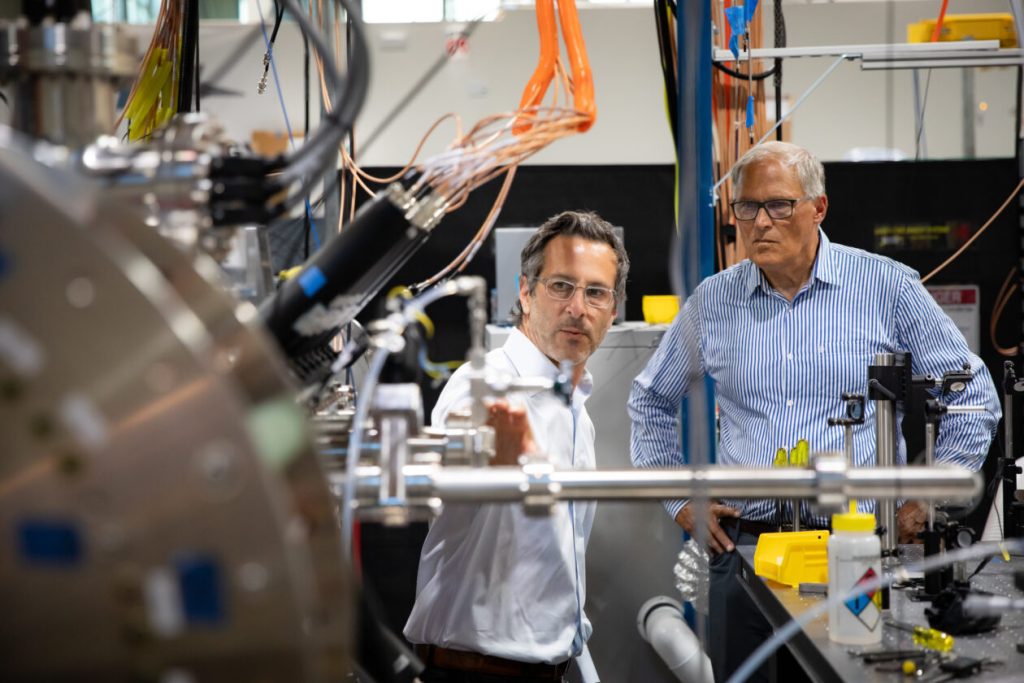Zap Energy, a fusion company based in Everett, Washington, is on the cusp of receiving a massive new investment of nearly $130 million, bringing its total funding to approximately $330 million. The company is focused on generating power through nuclear fusion, a process that involves smashing together light atoms to release energy, similar to the reactions that power the sun and stars. Despite the challenges associated with harnessing fusion energy, Zap and other companies in the sector are optimistic about achieving commercially viable power production in the near future, thanks to advancements in technology and significant investments in the industry.
The pursuit of fusion energy has been ongoing for decades, with physicists making new scientific milestones in recent years. While previous attempts to achieve commercial fusion power have fallen short, companies like Zap are hopeful that they will overcome these challenges. The potential of fusion energy as a nearly infinite source of clean power has attracted significant interest and investment, particularly as the demand for reliable and carbon-free energy sources continues to grow. If successful, fusion startups could revolutionize the energy industry and provide a sustainable solution to meet the world’s power needs.
Zap Energy was founded in 2017 by University of Washington professors Uri Shumlak and Brian A. Nelson, along with entrepreneur and investor Benj Conway. The company’s technology was developed in collaboration with researchers at Lawrence Livermore National Laboratory. Zap’s approach to fusion involves using a sheared-flow-stabilized Z-pinch technology, driving electric currents through superheated plasma to create the conditions necessary for fusion reactions. The company’s device is designed to compress the plasma using powerful magnetic fields, a simpler approach compared to other fusion strategies that require massive magnets and lasers.
Despite not yet achieving all of its targets, Zap has made significant progress in its fusion development efforts. The company was selected by the U.S. Department of Energy as one of eight recipients of funding from the Milestone-Based Fusion Development Program, a recognition of its ongoing efforts. While Zap missed its predicted milestone of hitting “scientific breakeven” in 2023, the company reached temperatures of 11 to 37 million degrees Celsius in its FuZE device, a threshold achieved by only a few technologies. Despite these challenges, Zap is moving forward with plans to commercialize its fusion technology and is exploring potential partnerships, such as working with TransAlta to repurpose equipment at a coal plant site for fusion power generation.
In addition to Zap Energy, other fusion companies in the Pacific Northwest are also gaining attention and investment. Helion Energy, a rival of Zap based in Everett, received a $375 million investment from OpenAI CEO Sam Altman. General Fusion in British Columbia, backed by Jeff Bezos, and Avalanche Energy in Seattle, supported by Chris Sacca, are also making strides in the fusion industry. The interest and investment in fusion technology highlight the growing demand for clean, reliable energy sources to power various industries, including data centers and artificial intelligence applications. With significant advancements in fusion research and technology, companies like Zap are optimistic about the future of fusion energy and its potential to revolutionize the energy sector.
Overall, the fusion energy sector is experiencing a surge in interest and investment as companies like Zap Energy strive to achieve commercial fusion power production. Despite the challenges associated with harnessing fusion energy, advancements in technology and significant investments are driving optimism in the industry. Companies like Zap are making progress in their fusion research and development efforts, with the potential to revolutionize the energy industry with clean, sustainable power sources. As the demand for carbon-free energy continues to grow, fusion startups are working towards achieving commercially viable fusion power production, which could provide a nearly infinite source of clean energy for various industries and applications.












